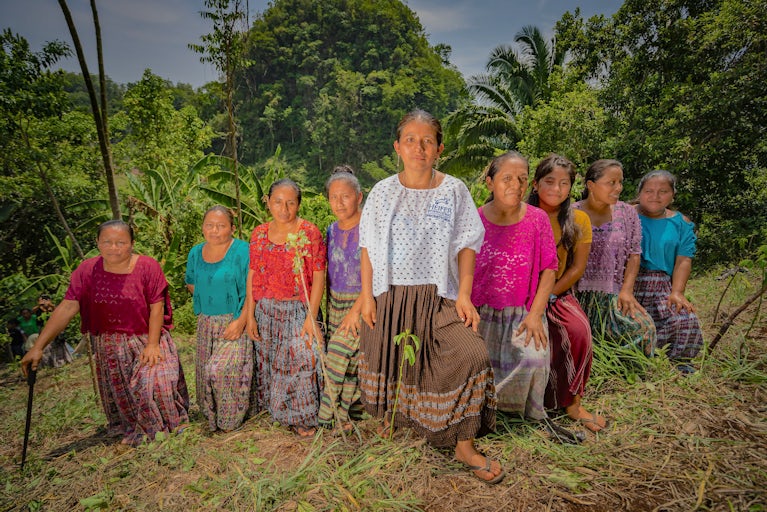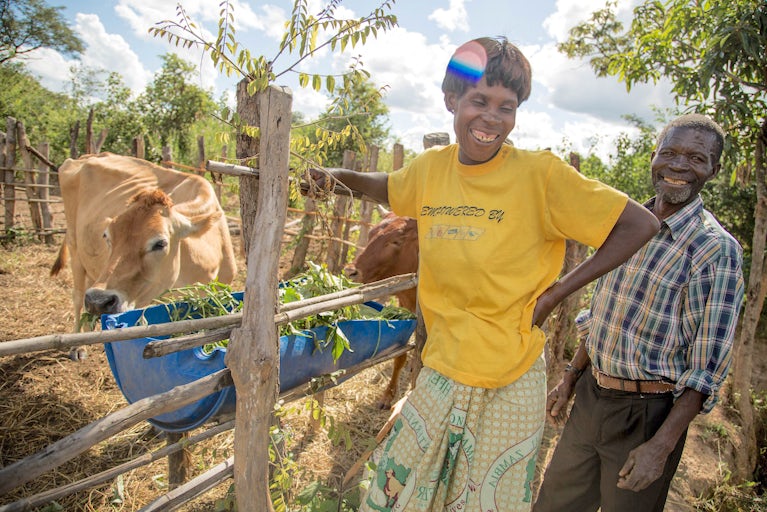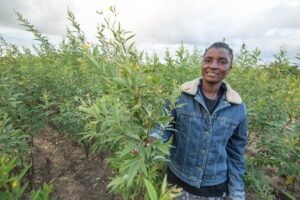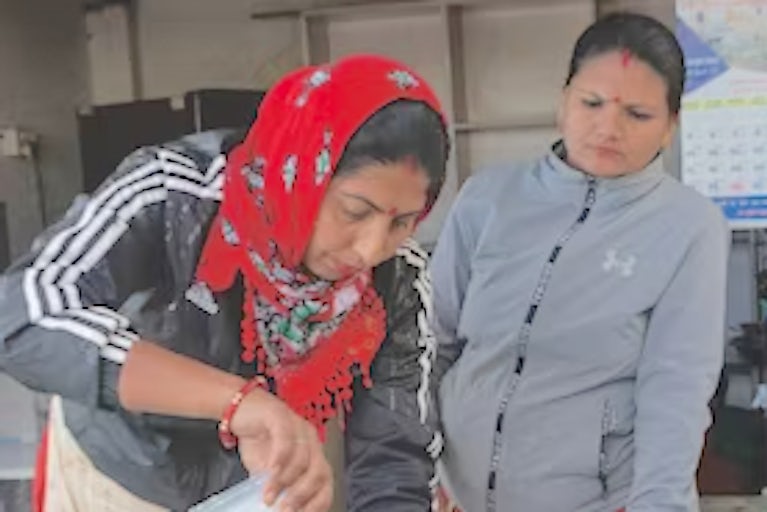
Why are Women Important in Farming?
Every day, women farmers make invaluable contributions to agriculture — and with support to overcome the unique challenges they face, they are catalysts for social and economic change.


We are helping 320,000 households escape poverty and become sustainably resilient by 2030.


Nearly 60 percent of Zambians work in agriculture, the second-largest economic sector after mining and a fundamental pillar in the country’s social fabric. However, agriculture suffers from low and declining productivity, with its gross domestic product dropping from 10.3 percent in 2010 to 5.8 percent in 2023. The national agricultural policy has focused predominantly on maize, with little private investment in other value chains, contributing to increased rural poverty and household nutrition challenges. Smallholder farmers, who dominate the sector, face high production costs, poor market access and specific environmental challenges such as terrain issues, pest diseases, water quality problems and post-harvest losses.
Agriculture is largely rain-fed, making it vulnerable to severe climatic effects, including El Niño, soil degradation and biodiversity loss, further threatening food supply growth. With a of 4.2 births per woman in 2022, Zambia’s food demand is projected to triple by 2030 compared to 2015, placing immense pressure on agricultural output. Women, who comprise 64 percent of the rural population and 80 percent of food producers are crucial to improving economic stability in rural areas. To address these challenges, the government’s Eighth National Development Plan and the 2012–2030 National Agriculture Policy aim to increase agricultural growth, enhance food security and reduce poverty. The National Agricultural Policy targets increasing crop gross domestic product and exports and supporting poverty reduction through mechanization and better market access.

Heifer has traditionally worked with smallholder farmers, especially women farmers, in Zambia’s dairy sector and has expanded into multiple value chains, including field crops such as sunflowers, cowpeas and common beans. Heifer has also implemented projects in goat and chicken livestock management and initiatives to increase smallholder communities’ access to reliable, affordable power, water and digital infrastructure with a primary objective of improving reliable water access and sustainable household income through farming.
Through strong linkages with a variety of public and private development partners, Heifer Zambia works to rapidly respond to rural communities’ needs, facilitate access to finance, strengthen local capacities and help smallholder farmers actively engage in formal agricultural markets for their products. To enhance water access, Heifer facilitates the establishment of “dam committees” that promote community ownership and participation in water management initiatives.
Our primary objective is helping families achieve a sustainable living income, our measure for the amount of money required for a decent life — including safe shelter, nutritious food, clothing, education and health care — while also reaching additional benchmarks for economic and climate resilience.
Year Heifer launched in Zambia
Household participants in 2024
Household participants to date
Project timeline: 2023–2024
The PWI Scaling up Community Led Water Harvesting project aims to strengthen the resilience of 3,600 rural households and farming communities in the Mlawe area of Vubwi District, Eastern Province. The project focuses on helping communities collect and store rainwater, reducing water scarcity. By constructing three dams, the project promotes irrigation and strengthens community leadership, entrepreneurship and water infrastructure management through sustainable agricultural and economic practices.
In Vubwi, an arid and drought-prone region, these dams provide year-round access to water for domestic use, livestock and farming. This effort helps mitigate climate change-induced water shortages, improves living standards and enhances economic stability for the community.
Project timeline: 2020–2025
The Women Economic Empowerment Project supports 16,000 people, primarily women, across eight districts in southern, eastern, central and western provinces by dismantling barriers to economic empowerment. Through mindset transformation and capacity building, the project reduces cultural, traditional and systemic obstacles that limit women’s participation in decision-making and higher-level roles within agricultural value chains. It promotes ownership of production resources, access to financial services and essential skills training to uplift dignity and increase living incomes.
The project enhances women’s agency and fosters gender equality and equity to ensure sustainable and improved livelihoods. By working with local partners, the project implements the Passing on the Gift® model, helping beneficiaries raise livestock and cultivate crops such as sunflowers, groundnuts, cowpeas and beans.
Project timeline: 2020–2024
The Community-Led Development Project (COLEDEP) is an initiative in Vubwi District, Eastern Province, aimed at alleviating hunger and poverty for 3,200 rural households. The project supports communities in achieving socio-economic self-reliance and fostering social cohesion through a collaborative approach with nongovernmental development partners and government departments. Focusing on women’s inclusion and empowerment, the project helps communities define their development goals and strengthens women’s participation in leadership roles.
The project improves access to water, sanitation and health care, enhances food and nutrition security and expands incomes, particularly for women. It also promotes better management of environmental and natural resources, contributing to long-term sustainability for the community.

Every day, women farmers make invaluable contributions to agriculture — and with support to overcome the unique challenges they face, they are catalysts for social and economic change.

Betty Chisamu received training and support from Heifer Zambia in the form of high-quality seeds and a new bicycle. With her newfound knowledge, she’s transforming the lives of her family and community.

This fact sheet explains Heifer’s locally led development approach, defines sustainable locally led development, and discusses why this approach is important.
Charles Phiri, Dam Committee Member
Cart is empty
Success!
Please be patient while we send you to a confirmation page.
We are unable to process your request. Please try again, or view common solutions on our help page. You can also contact our Donor Services team at 855.9HUNGER (855.948.6437).
Covering the transaction fee helps offset processing and administrative fees that we incur through taking payments online.